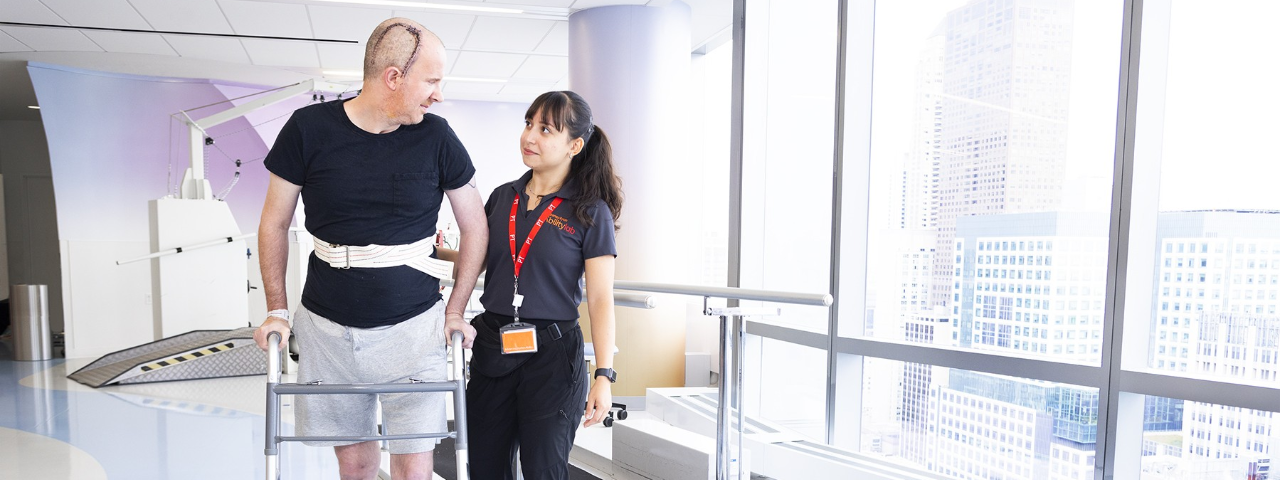Body
In the heart of Chicago’s bustling Streeterville neighborhood lies Shirley Ryan AbilityLab, formerly the Rehabilitation Institute of Chicago. In March 2017, the organization opened a $550 million, 1.2-million-square-foot facility as a “translational” research hospital in which clinicians, scientists, innovators, and technologists work together in the same space, surrounding patients, discovering new approaches, and applying (or “translating”) research in real time.
Within the 27-floor rehabilitation hospital, this translational model plays out in the five ability labs—applied research and therapeutic spaces—each focused on specific functional outcomes. Together, therapists and researchers offer evidence-based interventions for a minimum of 3 hours each day. The goal: better, faster outcomes for patients.
For instance, the Legs + Walking Lab is a dynamic, two-story space designed for inpatients to focus specifically on gait training, stairs, balance and strengthening related to lower-body impairments due to brain injury, stroke, spinal cord injury, or diseases of the nerves, muscles, or bones.
While this list is not all-encompassing, one of the most prevalent diagnoses treated in the Legs + Walking Lab is stroke—and one of the most common therapies offered for post-stroke patients is gait training.
At the heart of Shirley Ryan AbilityLab’s efforts to lead patients toward an optimum outcome are more than 200 active clinical trials and research studies aimed at improving recovery post-stroke. Interdisciplinary teams consisting of physical therapists, occupational therapists, speech-language pathologists, doctors, nurses, researchers, psychologists, and social workers work together with patients to identify specific goals and then outline a treatment program aimed at maximizing functional independence.
Patients also are referred to therapists based within the various ability labs who specialize in areas such as gait training, vestibular therapy, task-specific upper extremity training, aphasia, dysphagia, cognition, and pain. These therapists work closely with the primary therapists to identify the proper dosage, intensity and duration of sessions needed to facilitate neural reorganization for their specific interventions.
Gait Training Out of the Gate
Body
In the Shirley Ryan AbilityLab Legs + Walking Lab, gait therapists focus on promoting locomotor recovery for patients post-stroke. The primary physical therapists refer patients to gait therapy if walking goals are indicated, usually soon after completion of the initial evaluation.
Why is it so important to commence gait therapy soon after evaluation? Research indicates that earlier and more intensive rehabilitation post-stroke yields a quicker return to independent ambulation and improved functional mobility.1 As a result, getting patients up and moving as quickly as possible is the expectation once vitals are stable. If gait training is indicated but is not yet safe due to unstable vitals or orthostatic hypotension, patients still often will be referred to gait therapists to assist with tolerance to upright training using the tilt table or stander before progressing to ambulation.

